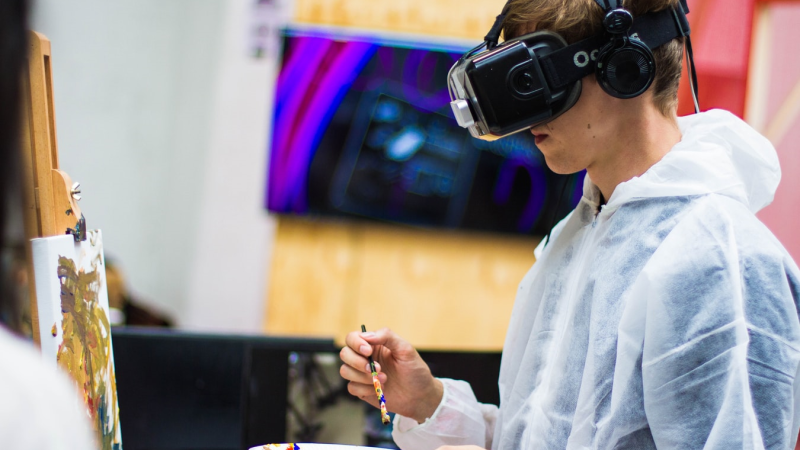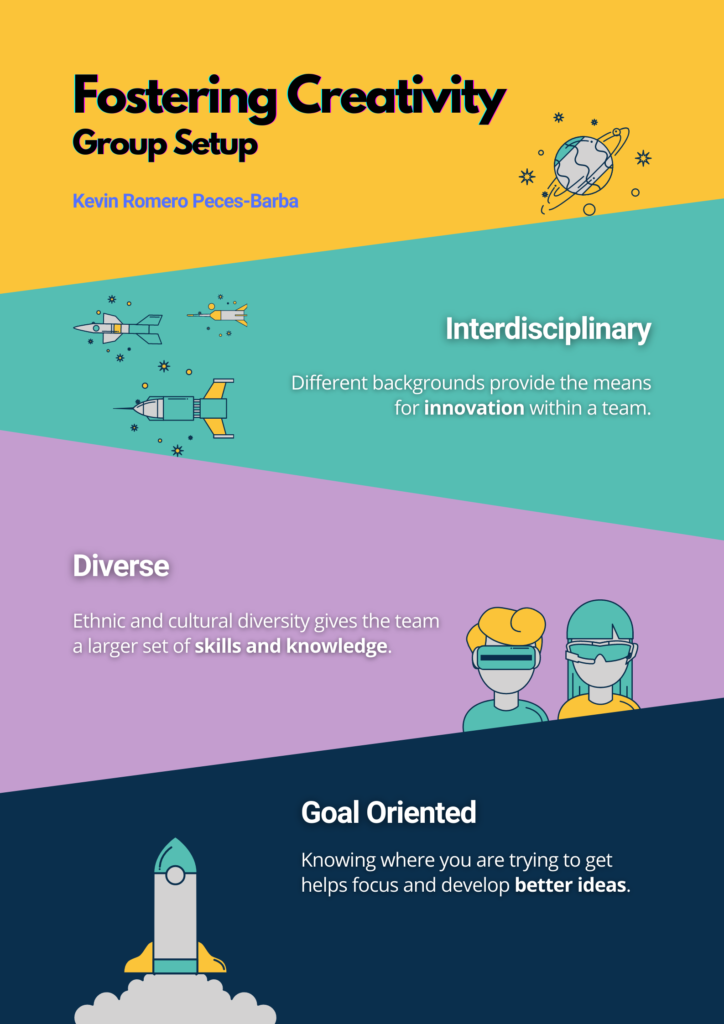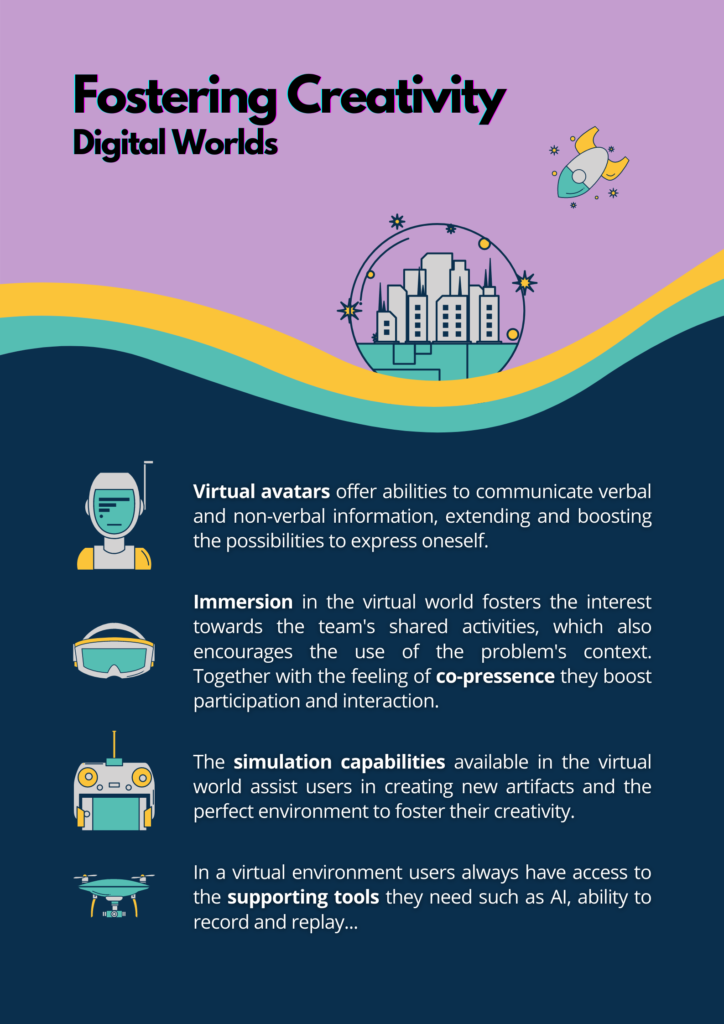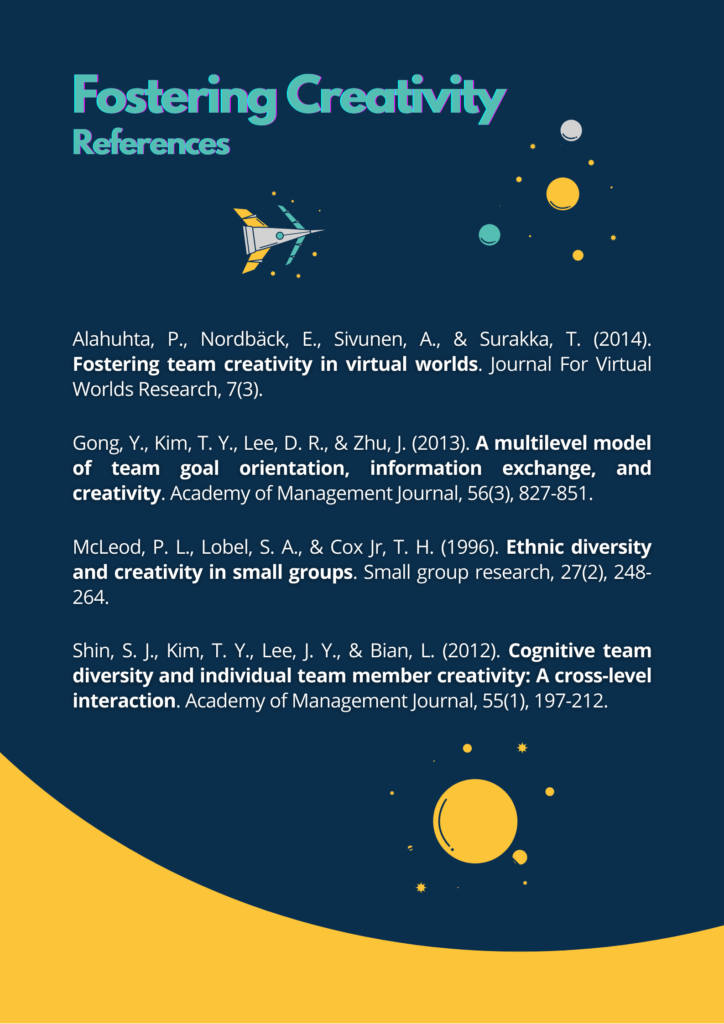Fostering Creativity in Digital Worlds

Creativity is closely related to innovation and, as such, is a very important topic for both scholars and profesionals in a broad range of fields and industries. It enables individuals and teams to produce new, useful ideas that can be developed into new solutions.
Reaching these objectives is often achieved in the workplace, through the interaction between coworkers and carrying out creative activities and tools, such as the well known brainstorming, or newer techniques such as visual communication.
Even though these techniques are widely used and proved, they tend to start from the base that a personal interaction in the workplace is present, which makes them weak in situations where such is not the case, like remote working.
As a means to solve the gap between these activities that foster creativity, and work teams that might be located remotely, a new concept has arised in recent years: virtual worlds.
These are environments set up in virtual or augmented reality. Such technologies allow coworkers to present to each other with virtual avatars which offer the abilities to communicate both verbally and non-verbally to others, in the same manner they would do it in person.
In these worlds, the immersion that is achieved foster interests in the group towards team activities through a feeling of co-pressence. This allows the team to share the context of the problem and work together.
Visualizing the problem and possible solutions through simulations and other tools, assist the team in developing and creating new artifacts and modifying the environment to suit their like and help fostering creativity.
In aims to expand the use of virtual worlds and mixed reality, Facebook has taken a step forward, presenting a system that makes use of VR headsets and enables facial expressions, body gestures, and voice to be shared in a virtual environment. (link to post)
Theirs is not the only work on the field. In a similar fashion, NVIDIA has presented a VR platform designed to allow for work collaboration in remote scenarios. (link to post)
You should not be deceived, however. These technologies don’t only enable office workers to improve their work. More important areas are also taking advantage of them. It’s the case of Oxford Medical Simulation (OMS), a platform that enables all kind of healthcare professionals to train their skills in a virtual world. (link to page)
References
Alahuhta, P., Nordbäck, E., Sivunen, A., & Surakka, T. (2014). Fostering team creativity in virtual worlds. Journal For Virtual Worlds Research, 7(3).
Gong, Y., Kim, T. Y., Lee, D. R., & Zhu, J. (2013). A multilevel model of team goal orientation, information exchange, and creativity. Academy of Management Journal, 56(3), 827-851.
McLeod, P. L., Lobel, S. A., & Cox Jr, T. H. (1996). Ethnic diversity and creativity in small groups. Small group research, 27(2), 248-264.
Shin, S. J., Kim, T. Y., Lee, J. Y., & Bian, L. (2012). Cognitive team diversity and individual team member creativity: A cross-level interaction. Academy of Management Journal, 55(1), 197-212.




